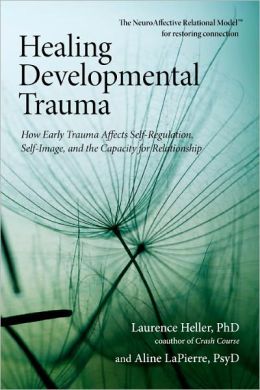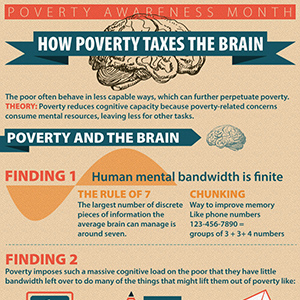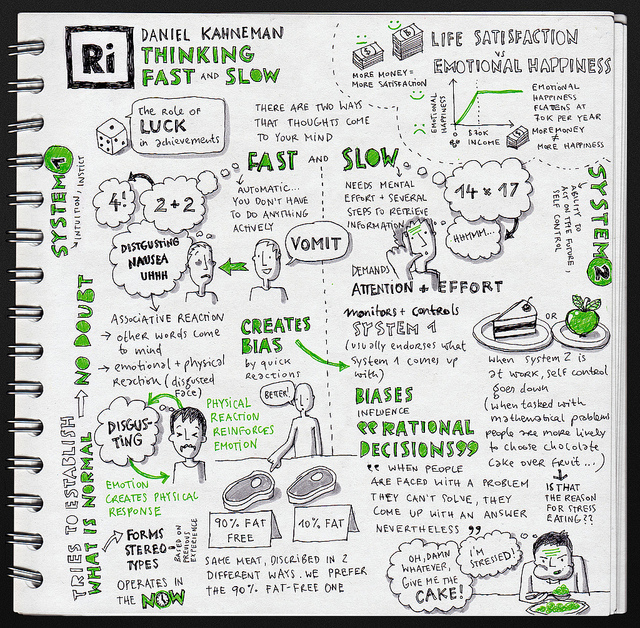
This is a wonderful article by Pamela Weintraub at Nautilus on the transformative power of living in liminal space, "betwixt and between." Living in liminal space is most obvious when we are between cultures or languages in a physical sense, but we can also experience this gap within ourselves if we are open to the experience (one of the premises of travel as a transformative experience).
At Home in the Liminal World
Living in transition, between cultures, we are discovering who we are
By Pamela Weintraub | Illustration by Chris Buzelli
December 19, 2013
When Ruth Behar moved from Cuba to Israel and then to a middle-class neighborhood in Queens, New York, in 1962, she was shunted into the “dumb class.” There she met another challenged student, Shotaro, from Japan. Together the two friends, age 6, helped each other learn English while inhabiting what Behar, now a professor of cultural anthropology at the University of Michigan, calls the “liminal space,” that in-between place where what has been is no more and what will be is not yet.
Behar found that to pass from one culture to another, to traverse the chasm of the liminal, language was the bridge. As she mastered English, she was able to help her parents navigate a new country and achieve success herself in school. “I think, dream, and live much of my life in the English language,” Behar wrote in a 2011 article. Due in no small part to her mastery of English, she wrote the beautiful Traveling Heavy: A Memoir In Between Journeys, about her family’s peripatetic movement, over generations, from Poland and Turkey to Israel to Cuba, where her parents were immersed in the island’s Jewish community.
Today Behar, 57, who travels constantly, is a remarkable embodiment of the conclusions in her anthropological work: Home may not be within a family or even a single culture, but between cultures and communities and constantly on the move. Home as we have conceived of it since the agricultural revolution is nearing an end. Now we seem to be returning to the life of the nomad. Some of us wander by literally traveling the world; still more are nomads in place, navigating a string of temporary jobs or immersive online worlds. However we make the journey, we are redefining home. And that home is redefining us.
In recent years, anthropologists have spotlighted a new generation at “home in the diaspora,” in Behar’s words. For them the liminal is not life’s interlude, but life itself. While being uprooted results in lost jobs, broken relationships, and, as cultural anthropologist Anthony D’Andrea says, “displaced minds,” scientists are finding benefits to life in the liminal lane. The more time we spend in alien realms, they say, the more likely we are to perceive the world in ways we could never otherwise imagine, evoking a perfect backdrop for fevered creative work, learning, and personal growth. “When you thrust yourself out of your usual context,” Behar says, “you find out who you are.”
The notion of a liminal period was introduced in the early 20th century by French anthropologist and folklorist Arnold van Gennep, who wrote about rites-of-passage ceremonies across cultures, from totem clans in Australia to Roman Catholic priests. Traditional rituals like baptisms, Bar or Bat Mitzvahs, and weddings marked transitions between a prior identity, time, or way of living and a future self. Such rituals generally involved separation from the group, a period of transition (the liminal state), and reincorporation. The liminal space—for instance, the rite of passage called Walkabout, in which male Australian Aboriginal teens live in the wilderness for six months or so—leads to the threshold of the new identity or life. In the case of Walkabout, the liminal space leads adolescent boys to the threshold of manhood itself.
The concept of liminality was broadened in the 1960s by British anthropologist Victor Turner, who described a state of limbo replete with ambiguity, where things once held as certain were thrown into doubt. In that wider sense, we all know the liminal well: The questing that comes with puberty, for instance, or the period of chaos that ensues when a government is overthrown. When we enter the liminal zone, our identity is held in suspension. The neophyte in that space has no family, property, or even identity—all the better to be transformed, Turner said.
Now it is time to broaden the definition of the liminal again. Some of our new liminality comes from the rise of the global citizen, whose work and lifestyle takes them from culture to culture in service of multinational corporations, governments, and nonprofits aiding the developing world. With economies slowing in the West and heating up in places like Turkey, China, India, and Brazil, workers can expect to leave their culture of origin for foreign lands. That includes Americans themselves. American Wave, using data from a recent Zogby Poll, found that 0.8 percent of households had planned to relocate abroad in 2009; by 2011, the number had soared to 2.5 percent, or 7.5 million people.
One need not be a global traveler to inhabit the in-between. Our move across borders and into the liminal state has soared, thanks to social forces from economic and workplace upheaval. Even as the economy in the United States recovers, work itself has become increasingly insecure. More than 42 million Americans, about a third of the workforce, are currently freelancers, consultants, independent contractors, or otherwise self-employed. The new workplace is a space between a prior short-term gig and that phantasm known as a fulltime job.
Until recently, the scientific study of personal transition has focused on the interlude: The honeymoon after a wedding, the summer between high school and college, the time between jobs. But as transitional spaces and periods have expanded to include so much more of our lives, the nature of inquiry has changed: Now researchers want to know what happens when liminality lasts months, years, even a lifetime.
One thread of research comes from anthropologists studying so-called “global nomads,” who spend childhood abroad and as adults often live and work across borders themselves. Neither fully part of the old culture nor totally immersed in the new, they achieve something else—what researchers call a “thirdness”—in which the cultures merge. Modern nomads can live between three cultures, four cultures, and more.
No matter what their era and region of the world, nomads have always shared certain traits: The most enduring could be the need to travel light. Archaeologist Steve Rosen of Ben-Gurion University of the Negev in Beer-Sheva, Israel, has studied prehistoric nomadic societies between 4,000 and 1,000 B.C. Unlike settled communities, which collected possessions and generated refuse at a significant pace, the nomads who stayed put for just a couple of months accumulated very little. Without land ownership, the nomads were free to pick up and leave, only limited by the seasonal availability of resources.
The impulse to shed possessions continues today. Fleura Bardhi, professor of marketing at the Cass Business School, City University of London, who studies mobility and globalization, showed that unlike immigrants of old, the new global nomads don’t much care for possessions reminding them of home. To track their culture, she interviewed 35 transnational professionals, mostly global and regional managers who had relocated more than three times in a decade, and traveled at least 60 percent of the time. Such an individual might come from Sweden but live in Vietnam and travel throughout Southeast Asia for much of the year. All study participants chose the lifestyle and 15 were what Bardhi calls completely “deterritorialized”—they did not even have a specific home. “Our participants could not live without mobility,” she says, because they craved experience, not things.
Unlike the immigrant group, possessions did not define who they were. Instead, Bardhi’s subjects quickly detached from one life by embedding themselves in the liminal space, discarding possessions and even friends before moving on. One person in the study had lived in 12 countries over the course of nine years and only moved what could fit in carry-on luggage. The rest was discarded and purchased new in every new place. Another individual threw out good-bye gifts from colleagues. Like real-life versions of the fictional characters in Up in the Air, married participants eschewed possessions in their transient lives; one couple coordinated calendars and met at airports whenever they could. “They found learning new languages and working with different people on different projects in different places a great way to develop,” Bardhi says. The travelers were happily at home in the liminal world.
Cultural anthropologist D’Andrea, today an advertising executive taking the pulse of the global crowd, has likewise discovered modern nomads at home in the state of transition. While pursuing his Ph.D. at The University of Chicago, D’Andrea spent years studying a group of artisans, therapists, and “neo-hippies” who traveled back and forth between the community of Ibiza Island, Spain, and Goa, India. Members of this digital, techno music-loving international crowd embraced the goal of personal transformation, and they were always on the move. By moving “across spaces and within themselves,” D’Andrea says, they “embraced the global as a new reference point and home.”
D’Andrea’s nomads had an Einsteinian perception of relativity—a sense of placement in the displacement of their new, globalized world. “It was a new way to see the relative nature of culture and identity, one that is noticed by means of movement,” he explains. By wandering from place to place, the people he studied were able to see life through new eyes and ultimately question values their culture of origin espoused. The liminal experience of hypermobility was the key existential state around which they formed their identities. They chose freedom and autonomy over possessions. They valued change over stability. Once they started wandering, their lives and relationships changed. Those who came to Ibiza as a couple, for instance, transformed so much they often broke up after living there. The nomadic life has “a disruptive impact on individuals and invites experimentation,” says D’Andrea. “The consequence is that old interests and partners may not look as attractive as before.”
While the traditional immigrant might hope to fit in, D’Andrea’s group of expressive nomads decisively “rejected their own homelands” and the ethnocentric cultures they spawned. Detached from constraints in their liminal space, they sought “any practice that allowed for exploration of their personal capabilities in creative, pleasurable, and transcendent ways.”
D’Andrea’s neo-hippies and Bardhi’s globetrotters represent the rest of us less in numbers than in universal traits: the desire and ability to learn and grow. “Global nomads are a window into the future of trends on the rise that change people,” says D’Andrea. At the same time, they point to the displacement and insecurity that haunt the liminal world.
It’s no surprise, then, with the rise of the liminal have emerged special guides, people deft at telling us how to navigate the ambiguous spaces between the lines. Sheila Ramsey, a consultant who works in global leadership development, has spent years helping businesses navigate across cultures, especially the colossal gap between East and West. The experience, she says, enhances intuition. Ramsey offers the example of Americans traveling to Japan. While Americans are straightforward, focused on getting tasks done, Japanese move forward only by navigating the backstory and attending to the feelings of colleagues and friends. To navigate the chasm, “Americans must step back, slow down, and rely on intuition,” Ramsey says. Without your native compass, sometimes only a sixth sense can be your guide.
Barbara F. Schaetti, a specialist in intercultural communication who works with Ramsey in helping global nomads adapt, offers an example of an engineering class given pipe cleaners to build a toy bridge. Half the class was shown examples of bridges that had worked in the past. The other half was shown nothing. Time after time, the group shown nothing—the group left to wander the liminal unknown—designed the best bridge. “They are wide open to all possibilities and can get out of their own way,” Schaetti says.
That wisdom is not lost on Maggi Savin-Baden of Coventry University in the United Kingdom. “The liminal state has become chronic,” she says.
Director of research at Coventry’s Disruptive Media Learning Lab, Savin-Baden has found we are serial learners. And serial zones of transition—liminal zones set off from the workaday world—are especially effective in helping us think critically. Indeed, she says, we need to immerse in liminal space to master the knowledge most useful to our postmodern world of creative destruction and constant change—so called “troublesome knowledge” that appears, at first, to be alien, counterintuitive, and incoherent, making no logical sense. Learners need to fail first to make breakthroughs, says Savin-Baden, who creates liminal zones in cyberspace, such as the virtual world Second Life, to help her students. “There is a sense of knowing the world differently there, because you are living and working through change,” she says.
In the end, say the scientists, we might as well reap the benefits of our chronically liminal state, because there is no going back. We live in a global society powered by constant change. Long stints of transition are here to stay. They form the breadcrumb path to the future. If we can find some peace in the interstices, we can attain troublesome knowledge, reinvent our lives, and deftly find our way home.
~ Pamela Weintraub is consulting executive editor at Discover and a freelance writer living in Brooklyn. You can find her on Twitter: @pam3001.




















